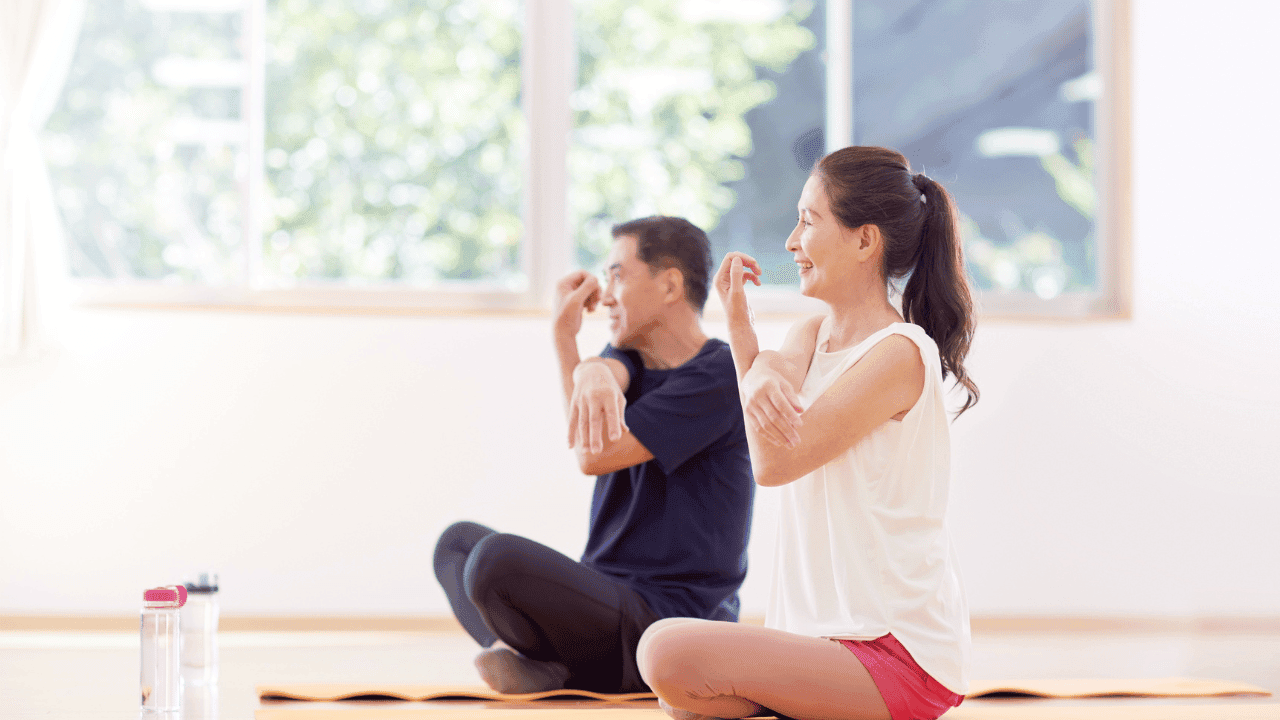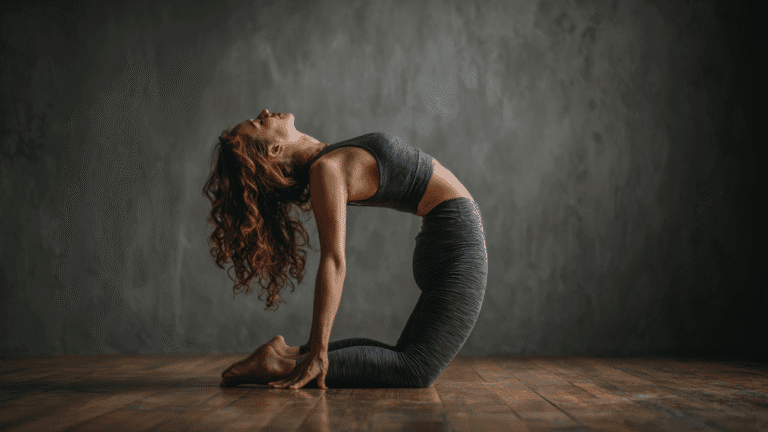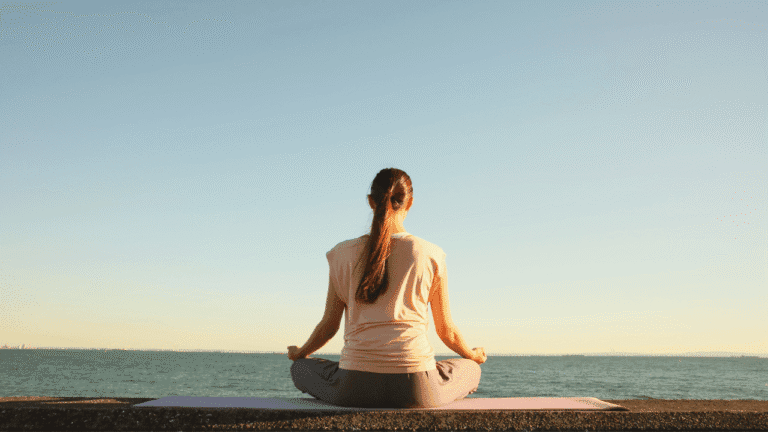Discover Basic Mindfulness Exercises to Reduce Stress

Want simple, science-backed ways to calm your mind? Basic Mindfulness Exercises, This page delivers short, practical practices you can try today to reduce stress and build steady calm. These tips focus on paying attention to the present moment with openness and without judgment.
In plain language, mindfulness means paying attention on purpose, in the present moment, with curiosity instead of harsh judgment. Start with short sessions and grow from there. With regular practice, you may notice better attention, improved sleep, and lower anxiety—benefits shown by institutions like the Mayo Clinic and Harvard.
Safety note: mindfulness is not a replacement for medical or psychological care. If you have severe trauma, PTSD, psychosis, or deep distress, consult a qualified professional before starting or changing a routine.
This article offers clear, accessible exercises for breath, body, senses, movement, eating, listening, and DBT-informed skills. Pick what fits your day, stay consistent with short sessions, and personalize the approach to your life.
Key Takeaways
- Short, simple practices can reduce stress and boost attention.
- Mindfulness is paying purposeful attention to the present moment.
- Major research shows benefits for sleep, anxiety, and mood.
- Not a substitute for professional care in severe cases—seek help if needed.
- Start small, choose what fits your day, and build steady practice.
Why Mindfulness Matters Right Now for Stress Relief and Focus
When stress spikes, a short habit of present attention can slow your reactions and clear mental clutter. This way of pausing interrupts autopilot patterns and widens the space between a trigger and your response.
Steadier attention follows because the pause reduces automatic, fast reactions. Constant notifications and rapid task-switching wear down focus. A simple practice helps the mind settle and resist habit-driven replies.
Research shows regular practice lowers stress reactivity, improves concentration, and supports better sleep. Programs often match other treatments for anxiety, depression, and chronic pain in measured outcomes.
- Shift from automatic responses to deliberate choices.
- Use brief resets during a busy workday to regain focus.
- Combine this approach with therapy, medication, and healthy routines.
“A small daily pause can change how you feel and act over weeks.”
Track short changes in mood, attention, and interactions. Then pick one simple technique to try today and notice the difference.
Getting Started: Simple Mindfulness You Can Do in Minutes
A quick present-moment check can cut stress and sharpen your focus in under two minutes. Use these short steps to reset your day and build a steady, easy practice.
Mindful Pause to reset your day
Try this anywhere: stop, soften your gaze, take a slow inhale through the nose, exhale slowly through the mouth, and name one clear intention before you move on.
Tip: relax your shoulders as you breathe. This tiny pause helps you shift from autopilot to choice.
One-minute present-moment check-in
Scan posture, jaw, and shoulders. Notice three sensations and name one passing thought without judging it.
Use natural anchors—breath, feet on the floor, or nearby sounds—to stabilize attention quickly. If the mind wanders, gently bring it back; that return is the skill.
- Stack two to three short pauses through the day to build consistency.
- Use cues: before a meeting, after email, or at task changes to reset between contexts.
- Even 60–180 seconds can lower reactivity and improve clarity for the next action.
Three-minute A-B-E: Awareness (notice your state), Breathing (focus on a few breaths), then Expansion (broaden to whole-body sensations). After the pause, pick the very next useful action and proceed deliberately.
Basic Mindfulness Exercises
How you notice something matters more than what you notice. The heart of this practice is two simple moves: notice with openness, then bring attention back when it drifts.
Pay attention without judgment
Use the Observe and Describe approach: notice a sensation or thought and label it plainly, for example “tightness in chest” or “planning thought.”
Acknowledge judgments as just passing thoughts. Then gently return to your anchor—breath, feet, or a sound—without arguing with the mind.
Bring attention back when the mind wanders
Each gentle return is like a rep for your attention muscle. Over time those reps build steadiness and reduce reactivity.
- Micro-drill: count breaths 1–10 for one minute. If you lose count, restart calmly.
- Choose an anchor that fits the moment—breath, feet, or sight—and switch when needed.
- Be kind to yourself; a friendly tone helps learning more than self-criticism.
Try this in daily life: wash your hands, wait in line, or walk to a meeting while staying present on purpose.
Breathing Practices to Calm the Nervous System
Your breath is a direct dial to the nervous system — learning a few simple patterns changes how you feel fast.
Slow, even breathing activates the parasympathetic response. This reduces heart rate and eases muscle tension so attention steadies and stress falls.
Box breathing for equal-count calm
Try inhale 4 seconds, hold 4, exhale 4, hold 4. Repeat for two minutes. A study showed daily two-minute sessions lowered anxiety when done regularly.
Belly breathing to anchor attention
Place one hand on your belly and one on your chest. Breathe so the lower hand rises first. This shifts you from shallow chest breath to diaphragm-driven calm.
Square and deep breathing variations
Use a simple mantra like “in/out” on each cycle to reduce mental noise. Try longer exhales if you feel tense; shorten counts if lightheaded.
Breathing colors to engage the senses
Imagine a cool color on the in-breath and a warm color on the out-breath. This playful cue helps when the mind resists quiet.
- Practice 2–5 minutes before meetings or hard talks.
- Track heart rate, muscle tension, and clarity after mini-sessions.
- If dizzy, lower counts or pause and breathe normally between cycles.
For more ways to start a short meditation routine, see starting meditation.
Body Awareness: Body Scan and Progressive Muscle Relaxation
Scanning the body from head to toe reveals subtle sensations that guide relief. Use a gentle inward sweep to notice pressure, warmth, tingling, or ease. Breathe into each area without forcing change and treat information as data, not a problem to fix.
Guided body scan for sensations and awareness
Move attention through this short sequence: crown, face, jaw, neck, shoulders, arms, chest, abdomen, hips, legs, feet. Pause briefly at each spot and name the sensations you find.
Nonjudgment: notice pressure, warmth, or numbness as neutral signals. Record brief notes if you journal where tension shows up during the day.
Progressive Muscle Relaxation to release tension
PMR alternates gentle tensing and full release to build contrast. Tense each group for 5–10 seconds, then let go and take a few calm breaths. End with three deep breaths and a body-wide scan.
- Difference: a body scan observes sensations; PMR creates a clear tension-to-release contrast.
- Evidence: PMR linked to meaningful reductions in stress and anxiety in large samples.
- Protocol: work head-to-toe, 5–10 seconds per group, full release, breathe.
Mini standing body scan for busy moments
When short on time, do a two-minute standing scan. Shift weight right, left, forward, back. Notice balance and subtle changes in muscle tone. Pair this with breath awareness to deepen calm and clarity.
Quick tip: try these exercises for a few minutes before a meeting. Keep the approach curious and kind—small, regular practice helps reduce overall stress and increase present-moment awareness.
Mindful Eating to Savor Food and Tune In to Hunger Cues
Taking eight to ten slow belly breaths before a meal creates space to notice hunger and set an intention. This short pause brings you into the present moment and lowers automatic eating urges.
Breathe before eating and set an intention
Pause and rate hunger on a 1–10 scale by checking physical signals in your body: stomach emptiness, shakiness, or salivation. Use those cues to decide whether to eat and roughly how much.
First three bites with full attention
For the first three bites, engage sight, aroma, texture, and taste with full attention. Notice how each bite lands in your mouth. Slow down and breathe between bites to improve digestion and enjoyment.
- Begin with a pre-meal pause to downshift and check body cues before choosing food or portion size.
- Use physical signs rather than the clock to guide timing and portions.
- Decide after three mindful bites whether to continue based on enjoyment and real need.
Practice this during simple meals and note how these moments change your energy and mood later. Treat patterns without judgment and adjust choices kindly.
Grounding with the Five Senses and the 5-4-3-2-1 Technique
A quick sensory check reconnects you to the present and lowers physical tension fast. Sensory grounding interrupts racing thoughts and anchors attention by shifting focus from worries to clear, simple data from the body and world.
Five things you can see, four you feel, three you hear, two you smell, one you taste
- Name five things you see. Notice colors, shapes, or distant details.
- Name four things you feel. Check textures, temperature, or pressure.
- Name three things you hear. Listen for near and far sounds.
- Name two things you smell. If none are obvious, recall a recent scent.
- Name one thing you taste. Let that small taste ground the moment.
Tip: take one slow exhale between each numbered step to deepen calm and steady awareness.
Bell or chime listening to return to the present moment
Strike a bell, phone chime, or singing bowl and listen until the sound fully fades. Sustain attention through the decay to sharpen focus.
Repeat two or three times as needed. If you need privacy, try a discreet variation: silently label any three sensory inputs you notice.
- Practice settings: at your desk, outside, or in transit to build reliable grounding under stress.
- After the exercise, notice changes in heart rate, posture, and mental clarity.
- This simple routine is one of several practical mindfulness exercises you can use when stress rises.
Mindful Walking to Bring Awareness into Everyday Movement
Turn a short walk into a moving pause by tuning into the feet and breath. Feel the heel-to-toe contact, notice the weight shift, and sense the leg swing with each step.
Simple script: feel heel-to-toe contact, weight shift, and leg swing on every step. Pair steps with natural breathing to keep a steady rhythm without forcing pace or depth.
Try indoor options like hallway loops or parking lot laps, or walk a neighborhood path outside. Use small attentional games—count steps between landmarks or avoid cracks—to keep attention in the moment.
- Soften shoulders, lengthen the spine, and let arms swing naturally to check posture.
- When thoughts pull you away, acknowledge them and gently return to the footsteps.
- Short, frequent walks (2–10 minutes) reset mood and energy throughout the day.
Afterward, pause and note any changes in tension, clarity, or how your body feels. This small activity can fold calm into daily life and strengthen attention over time.
Mindful Listening to Deepen Connection and Presence
Listening fully to another person creates a clear pathway to understanding and lowers tension in conversation.
Define it: mindful listening is offering undivided attention and curious presence to the speaker, noticing words, tone, and feelings without planning your reply.
Three-step approach:
- Set distractions aside and bring attention to the speaker.
- Listen for content and emotions, noting both facts and tone.
- Pause before responding to ensure clarity and reduce reactivity.
Use reflective replies: briefly summarize what you heard to confirm understanding. This reduces misunderstandings and builds trust.
If internal chatter or planning a reply appears, label it “thinking” and gently return to the speaker’s words.
Where to use it: try this in meetings, family talks, or coaching moments. For solo training, listen to music and pick out individual instruments to sharpen awareness and steady attention.
Guided Imagery and Safe Place Visualization for Stress Reduction
Picture a small, private refuge to calm the body and steady the mind. Guided imagery recruits your imagination and the brain’s sensory systems to lower arousal and soothe strong feelings.
Peaceful scene visualization
Sit or lie down, close your eyes, and take three slow, full breaths. Choose a scene—a beach, a forest, or a quiet room—and paint it using sight, sound, touch, smell, and taste.
Notice colors and light, the texture under your feet, the ambient sound, and a gentle temperature. On each exhale, say a simple phrase like “soften” or “safe” to deepen ease.
Create your personal safe place
Build a sanctuary you can revisit: name the space, add a favorite scent, a reassuring sound, and small comforting details. Spend 3–10 minutes at first and lengthen sessions as comfort grows.
Options: use a chime to begin and end, or record a short script to guide the moments. Finish with a gentle reorientation—open eyes, stretch fingers and toes, and notice your surroundings.
“A brief inner journey can shift the nervous system and help you return to the present with more calm.”
DBT-Informed Mindfulness Skills for Emotions and Clarity
DBT skills give short, practical ways to steady attention and manage strong emotions in the moment. These tools combine simple observation with clear action so you can reduce reactivity and move forward more deliberately.
Observe, Describe, Participate
Use the What skills to stabilize attention. Observe without judgment, describe what you notice in plain words, and then fully participate in the present task. This sequence builds nonjudgmental awareness and reduces automatic reactions.
Radical Acceptance
Radical Acceptance asks you to acknowledge reality without approving it. Letting go of the struggle with what you cannot change frees energy for solutions that do work.
Half‑Smile
The Half‑Smile is a quick, low-effort facial cue. Softening the mouth creates a small physiological shift that can nudge mood and help calm the body during tension.
STOP: A Fast Pause
Use STOP when impulses rise:
- Stop.
- Take a breath.
- Observe what you feel and think.
- Proceed mindfully.
Check the Facts
Before reacting, test your interpretations against evidence. Separate assumptions from facts, list alternative explanations, and ask what you would tell a friend. This reduces unhelpful beliefs and clarifies choices.
Practice tip: rehearse these skills during mild stress to build reliability when things are harder. Over time you’ll notice clearer thinking, steadier mood, and better problem solving under pressure.
“Before you send a heated email, STOP, take a breath, and Check the Facts—did you read it, or are you reacting to a feeling?”
Basic Mindfulness Exercises Quick Reset Tools for Overwhelm
Three focused minutes can shift how your body and mind respond to stress. Use simple, repeatable moves to stop escalation and regain clarity for the next step in your day.
Three-minute A-B-E
Minute 1: Awareness — notice bodily signals, emotions, and passing thoughts without judging them.
Minute 2: Breathing — slow inhales and exhales, keeping counts brief to steady the nervous system.
Minute 3: Expansion — widen attention to whole-body sensations and choose one small action to follow.
Butterfly Hug for self-soothing
Cross arms over the chest and alternate gentle taps on opposite shoulders. The bilateral tapping helps settle emotions and, in studies, reduced anxiety from severe to moderate for some people.
Affirmation-based practice
Create a short believable phrase like “I can handle this next step.” Repeat it with two slow breaths to engage reward circuits and steady attention.
Worry Tree to regain control
- Name the worry.
- Decide: can you act now? If yes, write one tiny next action and do it.
- If no, deliberately let it go and redirect attention to the present.
Tip: stack tools — try A-B-E then the Worry Tree — and repeat resets during busy life without self-judgment. Note which tool helps with specific thoughts or emotions and use it again.
For more short routines, explore a short meditation routine that fits into daily life.
Mindful Workout: Sync Breath, Body, and Attention
Syncing movement and breath turns a routine workout into a focused body-and-mind activity. Set a clear aim before you begin so effort and focus stay aligned.
Warm up and sync
Start with ~5 minutes of gentle movement while matching each motion to the breath. This warms the muscles and calms the nervous system.
Find a sustainable rhythm
Settle into 10–15 minutes of steady pace. If attention drifts, return to breath and movement with kindness. Choose an activity you enjoy—walking, cycling, dancing, gardening, or resistance work.
Add an optional challenge
- 10–15 minutes: increase intensity or skill to notice alertness and resilience.
- Keep form and safety as priorities; adjust to fitness and recovery needs.
Cool down and rest
Finish with a 5-minute cool down, then rest 5 minutes sitting quietly. Notice sensations in the body and changes in mood.
Tip: Track perceived stress before and after to see the benefits. For guidance on gentle movement practices, try getting started with mindful movement.
Mindful Driving to Lower Road Stress
A few steady breaths behind the wheel can shift a rising reaction into a deliberate choice.
Before you respond to a trigger, take one deep breathing cycle to widen the gap between impulse and action. Ask yourself what you need right now—safety, ease, or a moment to cool down—and act on that need.
Do a quick body scan for tension. Soften your jaw and shoulders. Offer a short, kind phrase to yourself like “May I be safe in this moment.” Repeat the same wish silently for other drivers to humanize the scene.
Practical steps while driving
- Frame traffic as a daily practice ground for patience and emotional regulation.
- Begin with a deliberate breath to settle the body and choose your response.
- Check needs (safety, ease) and adjust seat, posture, or speed accordingly.
- Use short, kind phrases silently to reduce frustration and maintain perspective.
- Humanize others on the road—extend the same wishes you offer yourself.
- Recenter after spikes: another slow breath and a shoulder release before proceeding.
- Keep eyes and attention on the road—safety is the first priority of mindful driving.
- Notice how mood can shift within seconds when compassion and breath are combined.
Use this simple way during a busy day to steady emotions and sharpen attention. Over time, small pauses behind the wheel change how your mind meets the noisy, shared world of traffic and give you a calmer moment between event and response.
Basic Mindfulness Exercises Playful and Sensory Practices to Train Attention
Sensory play—like exploring a fruit or listening closely to a song—builds steady attention in minutes. These short, hands-on activities train the mind by engaging the body and five senses in bright, simple ways.
Explore a fruit or mindful touch
Pick an orange or similar fruit. Observe color, feel the rind, and inhale its scent. Describe what you notice out loud or in a few words.
Peel slowly, touch the segments, then eat one bite with focused curiosity. This practice deepens savoring and links touch to attention.
Mindfulness of smell and sound
Sample candles, oils, or spices. Note immediate reactions and any memory that arises. For sound, pick a song and track one instrument or a repeating phrase.
Objects-in-a-bag and simple games
Place small things in a bag and guess them by touch. Play Simon Says or list-category games to strengthen selective focus in a playful group setting.
- Short sessions: 3–5 minutes to avoid fatigue.
- Rotate senses: switch daily to widen awareness.
- Keep it fun: playful drills help sustain long-term practice.
Build Your Daily Practice: Triggers, Time, and Small Wins
Small, reliable cues help a new practice stick more than sheer willpower. Design your space so you literally “trip over” reminders: leave a cushion or mat where you’ll see it and refresh sticky notes every few days.
Behavior design: trip-over cues and “If this, then that”
Use context to automate habit. Pair a short breath or minute of focus with something you already do. For example: “If my coffee brews, then 1 minute of breath focus.”
Make simple pairings like “If office door, then deep breath.” These small linkages reduce decision fatigue and make consistency easier than relying on motivation alone.
Quiet time, journaling, and app support
Schedule tiny, reliable windows—morning wake-up or post-lunch—for a short centering moment. Keep it small so you can repeat it every day.
Track progress: write two lines daily on mood, energy, and what helped. Note any patterns in thoughts and attention over weeks.
Use apps for timers, interval bells, and guided tracks. For more guided options, try a short meditation methods resource to find tools that fit your life.
- Start tiny: set compassionate goals and scale up slowly.
- Celebrate small wins to build identity as someone who practices regularly.
- Experiment and adjust cues until the routine feels natural.
Conclusion
A few brief, consistent habits can reduce reactivity and help the mind stay clearer across the day. Small mindfulness sessions—breath, scan, sensing, or movement—offer real benefits for lowering stress and sharpening attention.
Choose one simple technique to try today and one to test this week. Swap tools by context: breath at your desk, the 5-4-3-2-1 grounding on the go, or PMR in the evening. This flexible way helps fit practice into busy life.
Keep a light tracking habit—two lines about mood or focus—to notice benefits accumulating over time. Proceed gently, and seek professional support if you have serious mental health concerns.
Now: take one mindful breath and bring that present moment to the next thing you do.


















